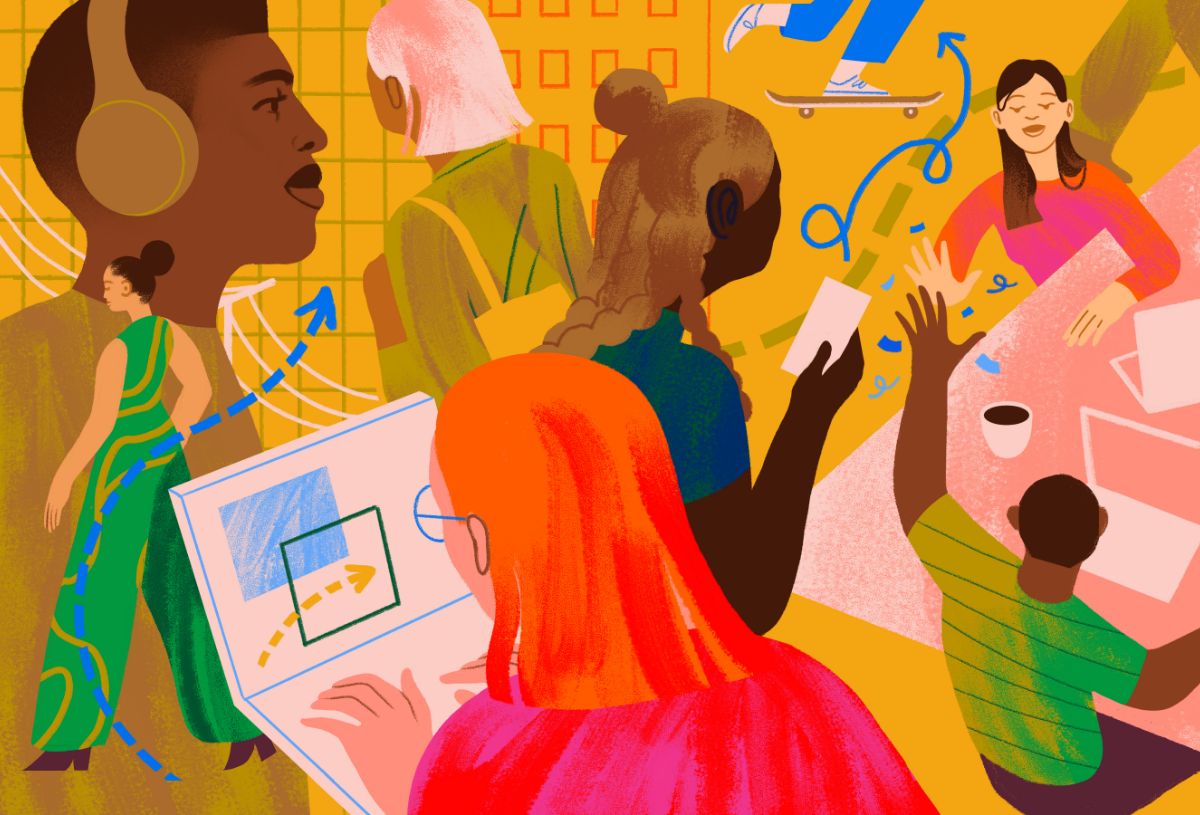5 HR Challenges. 5 Ways Recognition Can Help.

Updated on
May 29, 2025
29
May
2025
It’s no secret that recognition creates a great workplace culture and makes people feel valued. Research from the O.C. Tanner Global Culture Report shows that praising effort and recognising people for their great work leads to higher engagement, innovation, and revenue. But recognition can help with other HR challenges, too, from retention to hybrid work to DE&I.

Challenge No. 1: Retaining talent
Employees stay when they feel valued.
“[Recognition] is the greatest retention tool in the world.”
—Russell F. Cox, President and CEO, Norton Healthcare
Turnover can be one of the most expensive challenges a company faces. And it’s not just the cost of turnover itself, but also the loss of talent, skills, and institutional knowledge. The disruption in work and break in team connection. Simply put, it pays to keep your employees, and one of the best ways to do that is to make them feel appreciated.
It’s not all about the money
While 80% of employers think employees leave for higher pay, only 12% of them actually do. Global studies reveal that 79% of people who quit their jobs cite “lack of appreciation” as their reason for leaving. No one wants to stay at a job where they aren’t seen, valued, or appreciated for their hard work and contributions.
What to do
Have a robust recognition strategy that recognises and appreciates all elements of an employee’s life at work: their day-to-day efforts, above and beyond accomplishments, career achievements and milestones, and great work. Invest in a recognition solution like Culture Cloud which makes recognising easy, fun, and meaningful for your people.

Challenge No. 2: Managing an evolving hybrid/remote work model
People want to be seen, regardless of where they work.
Post-pandemic, companies have adopted a hybrid or completely remote workplace. But with these new models of work, the question remains: how can companies best meet the needs of their workers whether they are in the office or at home?
Research shows that there are many critical elements of the hybrid and remote work experience, but employees found the following to be most important:

Surprisingly, while where and when they worked was important to employees, it was career development that was most top of mind.
“Helping people feel appreciated lets them know they are on the right path, that they are being noticed, and people care” —Beril McManus, Senior Manager, Recognition and Engagement, American Airlines
Help employees feel seen, no matter where they are
It can be hard for employees to have the same opportunities for growth, networking, or special projects if they aren’t in the office. Recognition is an effective way to ensure hybrid and remote workers’ great work and contributions are seen. And when you do it right, recognition highlights employees to the entire company, so they can be remembered for those growth and development opportunities.
What to do
Make recognition public and social. Use a social wall to share recognition with your whole organisation, and integrations to feed recognition onto your intranet and shared screens. Spread word of your employees’ successes to senior leaders and across departments for maximum impact.

Challenge No. 3: Improving employee connection and workplace culture
Connect your people and transform your culture.
“Employees who feel more appreciated are more productive and feel more valued and connected.”
—Mike Nelson, Director of Talent Development, Heritage Bank
As an HR leader, you want to create a culture that connects your people to purpose, to each other, and to your organisation. In other words, the kind of culture that makes your employees want to come to work each day.
Recognition, more than anything else, can do this.

Recognition is more than just an HR program
In order for recognition to strengthen culture and connection, it must be more than just an HR program. It must be a company initiative and an integrated part of your culture and organisation.

What to do
Elevate recognition’s role in your organisation. Give it the same priority as other major company initiatives. Define recognition’s role in improving your culture, use recognition data and insights to make informed decisions, and empower HR leaders to set policies, train leaders, and hold leaders accountable for recognising their people.
Challenge No. 4: Provide meaningful employee experiences
Recognition fulfills employees’ needs in the workplace.
“Those three things—autonomy, complexity, and a connection between effort and reward—are three qualities that work has to have if it is to be satisfying.”
—Malcolm Gladwell, Researcher and Author
Peak experiences are those rare but powerful moments that profoundly impact how employees perceive their workplace culture. More than just everyday interactions, they tap into deep, affirmative emotions that help employees forge lasting connections to purpose, accomplishment, and one another.
The best peak experiences satisfy employees’ needs for mastery, autonomy, and connection in the workplace. Fulfil these needs and create more peak experiences.

Recognition satisfies employee needs
Recognition satisfies autonomy by acknowledging ownership of work—it increases autonomy satisfaction by 225%. It connects employee contributions to purpose, team, and leaders, increasing connection satisfaction by 209%. And it meets the mastery need by highlighting achievements, increasing mastery satisfaction by 201%.
What to do
Ensure recognition is an integrated part of your culture, so you can create peak experiences often. Recognition should be happening frequently and should be holistic, personalised, and seen throughout the organisation. Solutions like Culture Cloud integrate recognition into the flow of work, so employees can easily give and receive appreciation.
Challenge No. 5: Fostering diversity, equity, and inclusion
An important part of DE&I is belonging.
Diversity, equity, and inclusion are top of mind for many organisations, as they should be. Yet only 44% of employees say their company’s diversity and inclusion efforts feel sincere. Companies are at a loss for how to build true inclusion at work.
Ultimately, inclusion at work is about belonging—ensuring that all employees feel like they belong, are valued, appropriately utilised, and welcomed in every setting. And recognition demonstrates that people belong at the organisation.

Recognition builds belonging
When you recognise employees you show they are valued as an individual for their unique selves and contributions; that they are an integral part of and belong on the team and at your organisation. Recognition connects employees to a company’s purpose and one another.

What to do
Recognition must be available for everyone. This includes giving all employees (offline, remote, leaders and non-leaders, and employees in all locations) access to the same tools and awards and the ability and empowerment to both give and receive recognition. It also includes enabling all employees to use recognition and ensuring equity across your global locations.
“Recognition and appreciation are really an opportunity to show your employees they are seen, they are heard, and they are valued. It’s important to understand the value that each of your individual employees is bringing to the table and appreciate who they are as a person, both the impact they make and the character traits that contribute to the diversity and success of your teams.”
—Samantha Elliot, Total Rewards Programs Lead, BASF
More recognition means fewer challenges for you
Recognition is a way to:
- Keep top talent and motivate them to do more
- Inspire other employees around them
- Reinforce your culture and values
All of which make it easier for you to tackle the other organisational challenges on your list. When your employees thrive, your business does, too.
As an HR leader, implementing a recognition program is one of the best moves you can make. Recognition doesn't have to cost a lot, and with the right technology, it can actually save resources—in both time and money.
To see how recognition can help your organisation, talk to one of our experts.
It’s no secret that recognition creates a great workplace culture and makes people feel valued. Research from the O.C. Tanner Global Culture Report shows that praising effort and recognising people for their great work leads to higher engagement, innovation, and revenue. But recognition can help with other HR challenges, too, from retention to hybrid work to DE&I.

Challenge No. 1: Retaining talent
Employees stay when they feel valued.
“[Recognition] is the greatest retention tool in the world.”
—Russell F. Cox, President and CEO, Norton Healthcare
Turnover can be one of the most expensive challenges a company faces. And it’s not just the cost of turnover itself, but also the loss of talent, skills, and institutional knowledge. The disruption in work and break in team connection. Simply put, it pays to keep your employees, and one of the best ways to do that is to make them feel appreciated.
It’s not all about the money
While 80% of employers think employees leave for higher pay, only 12% of them actually do. Global studies reveal that 79% of people who quit their jobs cite “lack of appreciation” as their reason for leaving. No one wants to stay at a job where they aren’t seen, valued, or appreciated for their hard work and contributions.
What to do
Have a robust recognition strategy that recognises and appreciates all elements of an employee’s life at work: their day-to-day efforts, above and beyond accomplishments, career achievements and milestones, and great work. Invest in a recognition solution like Culture Cloud which makes recognising easy, fun, and meaningful for your people.

Challenge No. 2: Managing an evolving hybrid/remote work model
People want to be seen, regardless of where they work.
Post-pandemic, companies have adopted a hybrid or completely remote workplace. But with these new models of work, the question remains: how can companies best meet the needs of their workers whether they are in the office or at home?
Research shows that there are many critical elements of the hybrid and remote work experience, but employees found the following to be most important:

Surprisingly, while where and when they worked was important to employees, it was career development that was most top of mind.
“Helping people feel appreciated lets them know they are on the right path, that they are being noticed, and people care” —Beril McManus, Senior Manager, Recognition and Engagement, American Airlines
Help employees feel seen, no matter where they are
It can be hard for employees to have the same opportunities for growth, networking, or special projects if they aren’t in the office. Recognition is an effective way to ensure hybrid and remote workers’ great work and contributions are seen. And when you do it right, recognition highlights employees to the entire company, so they can be remembered for those growth and development opportunities.
What to do
Make recognition public and social. Use a social wall to share recognition with your whole organisation, and integrations to feed recognition onto your intranet and shared screens. Spread word of your employees’ successes to senior leaders and across departments for maximum impact.

Challenge No. 3: Improving employee connection and workplace culture
Connect your people and transform your culture.
“Employees who feel more appreciated are more productive and feel more valued and connected.”
—Mike Nelson, Director of Talent Development, Heritage Bank
As an HR leader, you want to create a culture that connects your people to purpose, to each other, and to your organisation. In other words, the kind of culture that makes your employees want to come to work each day.
Recognition, more than anything else, can do this.

Recognition is more than just an HR program
In order for recognition to strengthen culture and connection, it must be more than just an HR program. It must be a company initiative and an integrated part of your culture and organisation.

What to do
Elevate recognition’s role in your organisation. Give it the same priority as other major company initiatives. Define recognition’s role in improving your culture, use recognition data and insights to make informed decisions, and empower HR leaders to set policies, train leaders, and hold leaders accountable for recognising their people.
Challenge No. 4: Provide meaningful employee experiences
Recognition fulfills employees’ needs in the workplace.
“Those three things—autonomy, complexity, and a connection between effort and reward—are three qualities that work has to have if it is to be satisfying.”
—Malcolm Gladwell, Researcher and Author
Peak experiences are those rare but powerful moments that profoundly impact how employees perceive their workplace culture. More than just everyday interactions, they tap into deep, affirmative emotions that help employees forge lasting connections to purpose, accomplishment, and one another.
The best peak experiences satisfy employees’ needs for mastery, autonomy, and connection in the workplace. Fulfil these needs and create more peak experiences.

Recognition satisfies employee needs
Recognition satisfies autonomy by acknowledging ownership of work—it increases autonomy satisfaction by 225%. It connects employee contributions to purpose, team, and leaders, increasing connection satisfaction by 209%. And it meets the mastery need by highlighting achievements, increasing mastery satisfaction by 201%.
What to do
Ensure recognition is an integrated part of your culture, so you can create peak experiences often. Recognition should be happening frequently and should be holistic, personalised, and seen throughout the organisation. Solutions like Culture Cloud integrate recognition into the flow of work, so employees can easily give and receive appreciation.
Challenge No. 5: Fostering diversity, equity, and inclusion
An important part of DE&I is belonging.
Diversity, equity, and inclusion are top of mind for many organisations, as they should be. Yet only 44% of employees say their company’s diversity and inclusion efforts feel sincere. Companies are at a loss for how to build true inclusion at work.
Ultimately, inclusion at work is about belonging—ensuring that all employees feel like they belong, are valued, appropriately utilised, and welcomed in every setting. And recognition demonstrates that people belong at the organisation.

Recognition builds belonging
When you recognise employees you show they are valued as an individual for their unique selves and contributions; that they are an integral part of and belong on the team and at your organisation. Recognition connects employees to a company’s purpose and one another.

What to do
Recognition must be available for everyone. This includes giving all employees (offline, remote, leaders and non-leaders, and employees in all locations) access to the same tools and awards and the ability and empowerment to both give and receive recognition. It also includes enabling all employees to use recognition and ensuring equity across your global locations.
“Recognition and appreciation are really an opportunity to show your employees they are seen, they are heard, and they are valued. It’s important to understand the value that each of your individual employees is bringing to the table and appreciate who they are as a person, both the impact they make and the character traits that contribute to the diversity and success of your teams.”
—Samantha Elliot, Total Rewards Programs Lead, BASF
More recognition means fewer challenges for you
Recognition is a way to:
- Keep top talent and motivate them to do more
- Inspire other employees around them
- Reinforce your culture and values
All of which make it easier for you to tackle the other organisational challenges on your list. When your employees thrive, your business does, too.
As an HR leader, implementing a recognition program is one of the best moves you can make. Recognition doesn't have to cost a lot, and with the right technology, it can actually save resources—in both time and money.
To see how recognition can help your organisation, talk to one of our experts.



